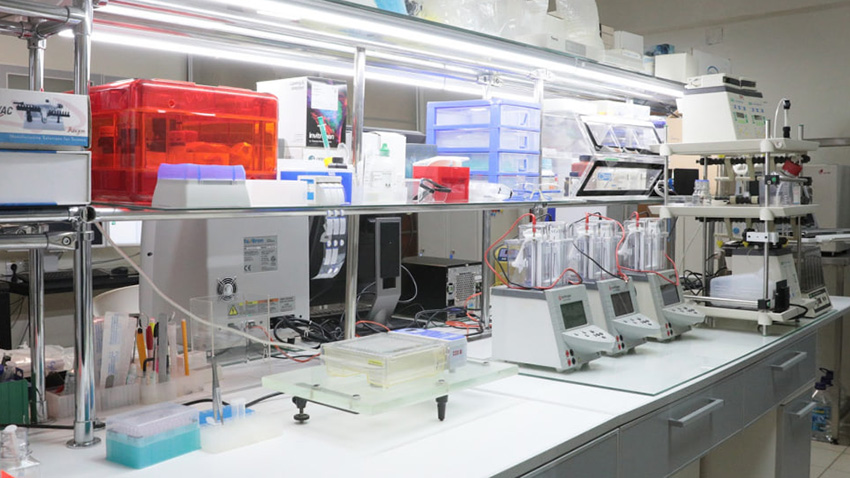The World Bank is one of the most powerful international financial institutions supporting the development of education in Ukraine. The Bank has allocated $200 million as part of the UIHERP Improving Higher Education for Results project. Competitive higher education institutions can count on support.
The first key area is already at the implementation stage. Universities that have undergone reorganisation will receive an investment of USD 1.5 million in research and teaching equipment. The equipment is currently being supplied to universities in Odesa, Mykolaiv and Dnipro. The list of universities participating in the project also includes Lviv Polytechnic which merged with the Ukrainian Academy of Printing last year.
Professor Ivan Demydov, Doctor of Technical Sciences, Vice-Rector for Research, confirmed our University’s participation in the project:
– In 2024, Lviv Polytechnic was invited to join the UIHERP initiative «Improving Higher Education for Results». We accepted the offer. At a previous meeting of the University Administration, we discussed participation in the project, taking into account the interests of the university and the possibilities of modernising the laboratories and equipment of certain university departments. We signed an agreement with the Ministry of Education and Science.
– The first tranche is planned to be used to modernise and purchase equipment for teaching and research laboratories. Which Lviv Polytechnic Departments have an urgent need for this?
– To answer this question in the context of research laboratory equipment, we must first understand how much equipment is needed by researchers. This is not difficult to understand if we are guided, firstly, by information about the availability of highly qualified personnel and scientific schools – the greater this potential is, the higher is the priority of procurement; secondly, by the prospects for commercialising the results that can be achieved with the equipment, such as performing contractual work, creating high-value prototypes, simplifying routine research; and thirdly, by the prospects for applying for grants/projects/research and developments, etc.
Scientists often need equipment for their daily research or educational process, the cost of which is sometimes very high. It is good when we can buy it with grant funds. But what if the money is from the university budget or government loans? Therefore, it is important to set the right priorities in replenishing the material and technical base of the university, especially in wartime.
We have research groups that work successfully and have real needs. We try to satisfy them with basic funding and university funds. As part of the UIHERP project, we have applied for the purchase of a scanning electron microscope with an energy dispersive spectrometer. This year we expect to receive it and put it into operation. The procurement is at the stage of equipment delivery, and preparatory work is underway. In particular, the Ministry of Education and Science has funded the installation of a solar power plant to support the uninterrupted operation of expensive equipment in the case of possible power outages. The purchase of equipment for the University’s Data Processing Centre (DPC), including computer servers, specialised equipment for the Scientific and Technical Library, as well as specialised software and multimedia for classrooms, is also currently at the stage of approval.
– So, measure seven times, cut once. In your opinion, is one and a half million dollars for a university reorganisation a lot or a little?
– It may sound strange to some, but one and a half million dollars to provide teaching and research laboratories with modern equipment is a drop in the bucket. If we are talking about modernising certain areas of the university, these funds will only be enough to switch to modern generation equipment, albeit of a slightly higher quality than the one which is already used by leading foreign universities. Unfortunately, equipment, for example, for routine analytical research, which is not something out of the ordinary for European universities, is still quite expensive for us.
– Taking into account all the pros and cons, what specific equipment does the university want to use for the one and a half million dollar share of the World Bank’s support and which structural units will receive it?
– First of all, the equipment will be given to those units that mainly serve the university as a whole. In particular, we are talking about the Training Technical Centre of Network Technologies. The Institute of Chemistry and Chemical Technologies, the Institute of Information and Communication Technologies and Electronic Engineering, the Institute of Applied Mathematics and Fundamental Sciences, the Institute of Mechanical Engineering and Transport, the Institute of Computer Science and Information Technologies, as well as the Centre for Communication and the Scientific and Technical Library.
Within the project it is planned to purchase a number of items of network infrastructure special equipment, including, as I have already mentioned, a scanning electron microscope with an energy dispersive spectrometer for the above mentioned Institutes; some equipment for a studio for creating educational videos; projectors, screens, IP cameras, and microphones for the classroom for hybrid training sessions; a scanner, computers, and a server for the Scientific and Technical Library and Data Processing Centre, etc. Thus, there is the answer to the question about the ratio of the nominal value of one and a half million dollars to the real value, which in our case is determined by the amount of equipment proposed for purchase for the needs of Lviv Polytechnic.
